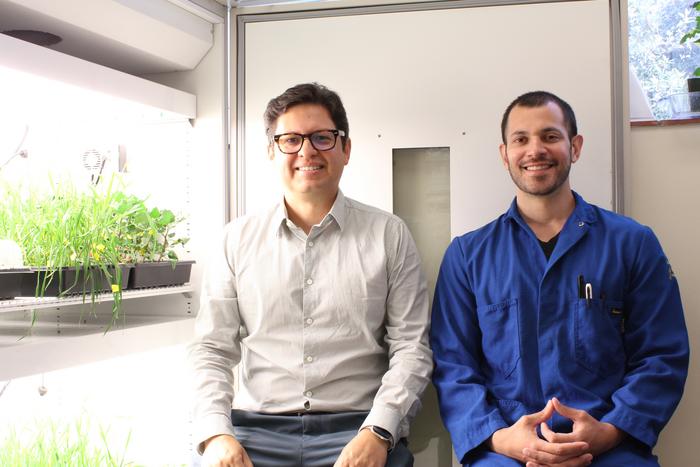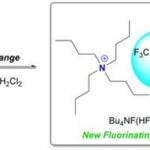
A groundbreaking study led by researchers at the University of California, Riverside (UCR) has uncovered a previously unknown mechanism by which nanoparticles, both naturally occurring and human-made, can alter fundamental processes within plant cells, reducing the efficiency of photosynthesis. This discovery holds significant implications for agriculture, environmental science, and nanotechnology, shedding light on the complex interactions between engineered materials and living organisms at the molecular level.
Nanoparticles, defined as particles with dimensions measured in billionths of a meter, originate from diverse sources such as engine combustion, industrial manufacturing, forest fires, and volcanic eruptions. Their ubiquitous presence in the environment has prompted extensive research into their potential benefits and risks. Notably, engineered nanoparticles have been hailed as transformative tools in agriculture, enabling precision delivery of nutrients and pesticides, enhanced protection against climatic stresses like drought, and real-time monitoring of plant health through nanosensors.
Despite their promise, the new research warns of an inherent challenge: once these positively charged nanoparticles infiltrate plant cells, they undergo biochemical transformations that substantially impair a protein integral to photosynthesis. Photosynthesis, the cornerstone of plant metabolism and global carbon cycling, relies heavily on the enzyme Ribulose-1,5-bisphosphate carboxylase oxygenase, or RuBisCO, which catalyzes the fixation of atmospheric carbon dioxide into organic molecules. This enzyme is arguably the most abundant protein on the planet, underscoring the critical nature of its function.
.adsslot_BOg1z3RDtH{width:728px !important;height:90px !important;}
@media(max-width:1199px){ .adsslot_BOg1z3RDtH{width:468px !important;height:60px !important;}
}
@media(max-width:767px){ .adsslot_BOg1z3RDtH{width:320px !important;height:50px !important;}
}
ADVERTISEMENT
The UCR-led team, headed by associate professor Juan Pablo Giraldo and his graduate student Christopher Castillo, discovered that nanoparticles entering plant cells experience shifts in pH and acquire lipid coatings derived from the plant cell membranes. This biochemical “corona” fundamentally changes the nanoparticles’ surface properties, enabling stronger binding affinity to RuBisCO. Contrary to expectations that electrostatic charge alone might disrupt enzymatic activity, the study revealed that these in vivo transformations are the primary drivers of interference with RuBisCO’s catalytic function.
Experimental work conducted across multiple esteemed institutions involved meticulous measurement of photosynthetic carbon dioxide uptake in Arabidopsis plants, a model organism in plant biology. Results demonstrated that while nanoparticles had limited effect on RuBisCO activity in vitro, their transformed counterparts inside living plants reduced enzymatic efficiency by a factor of three. This represents a substantial decline with potential repercussions for plant growth, crop yields, and broader ecological systems.
The research extended beyond biological assays, incorporating advanced computational simulations to elucidate the molecular dynamics of nanoparticle-lipid interactions in the presence of RuBisCO. Rigoberto Hernandez, a chemistry professor at Johns Hopkins University and co-author, explained that these simulations provide atomic-level insights into how lipid molecules transfer onto nanoparticle surfaces and mediate their subsequent binding to the enzyme. This integrative approach combining experimental biology, physical chemistry, and computational modeling was pivotal to unraveling the intricate mechanism at play.
Experts emphasize that the findings highlight a crucial gap in current understanding of nanoparticle behavior within complex biological environments. Until now, the research community lacked tools to directly compare nanoparticle impacts on protein function inside living cells versus isolated protein systems. The work spearheaded by Giraldo’s team establishes a new paradigm, illustrating that nanoparticle transformations occurring in vivo can dramatically alter biological outcomes, underscoring the need for comprehensive investigation of nanomaterial biocompatibility.
Their implications extend beyond agriculture, given that nanoparticles permeate ecosystems worldwide due to natural phenomena and anthropogenic activities. Understanding how these tiny particles interact chemically and physically with living organisms is vital for predicting ecological impacts, formulating regulatory policies, and designing safer nanotechnologies. The NSF-supported Center for Sustainable Nanotechnology, which backed this study, fosters collaborations aimed at elucidating these critical interfaces.
Importantly, the discovery offers a hopeful path forward: with knowledge of the transformation mechanisms and consequent protein interactions, scientists can engineer nanoparticles to minimize harmful effects while maximizing agricultural benefits. Such next-generation nanomaterials could be tailored to evade deleterious protein binding or to degrade safely after delivering their payloads, balancing efficiency with environmental stewardship.
Catherine Murphy, a chemistry professor at the University of Illinois Urbana-Champaign and study co-author, remarked on the significance of the work. She emphasized that despite the challenges revealed, understanding these molecular mechanisms opens avenues to redesign nanotechnologies that truly serve ecological and agricultural resilience. The study serves as a clarion call to reexamine assumptions about nanomaterial safety and efficacy, advocating for a more nuanced, molecular-level perspective on their interactions.
Overall, this landmark research reshapes the scientific narrative around nanoparticles in living systems, demonstrating that their dynamic biochemical transformations critically influence fundamental biological functions like photosynthesis. As humanity grapples with food security and environmental sustainability, insights from such interdisciplinary endeavors will be essential to harness nanotechnology’s full potential without compromising the health of plants that sustain life on Earth.
Subject of Research: Interactions and transformations of positively charged nanoparticles inside plant cells affecting RuBisCO and photosynthetic function
Article Title: In vivo transformations of positively charged nanoparticles alter the formation and function of RuBisCO photosynthetic protein corona
News Publication Date: 3-Jun-2025
Web References:
Study published in Nature Nanotechnology: https://www.nature.com/articles/s41565-025-01944-x
NSF Center for Sustainable Nanotechnology: https://susnano.wisc.edu/
References:
Giraldo, J.P., Castillo, C., Hernandez, R., et al. (2025). In vivo transformations of positively charged nanoparticles alter the formation and function of RuBisCO photosynthetic protein corona. Nature Nanotechnology. DOI: 10.1038/s41565-025-01944-x
Image Credits: Juan Pablo Giraldo/UCR
Keywords: Nanoparticles, Nanomaterials, Nanotechnology, Agriculture, Agricultural chemistry, Agricultural biotechnology, Farming, Photosynthesis, Plant physiology, Plant sciences, Plants, Crops, Plant growth, Iron, Chemical engineering
Tags: biochemical transformations in plant cellschallenges of using nanoparticles in agricultureenvironmental impact of engineered nanoparticlesimplications of nanoparticle researchmolecular interactions between nanoparticles and plantsnanoparticles in agriculturenanotechnology in agriculturephotosynthesis impairment in plantsrole of RuBisCO in carbon fixationsources of nanoparticles in the environmenttoxic effects of nanoparticles on plantsunderstanding plant metabolism and toxicity



